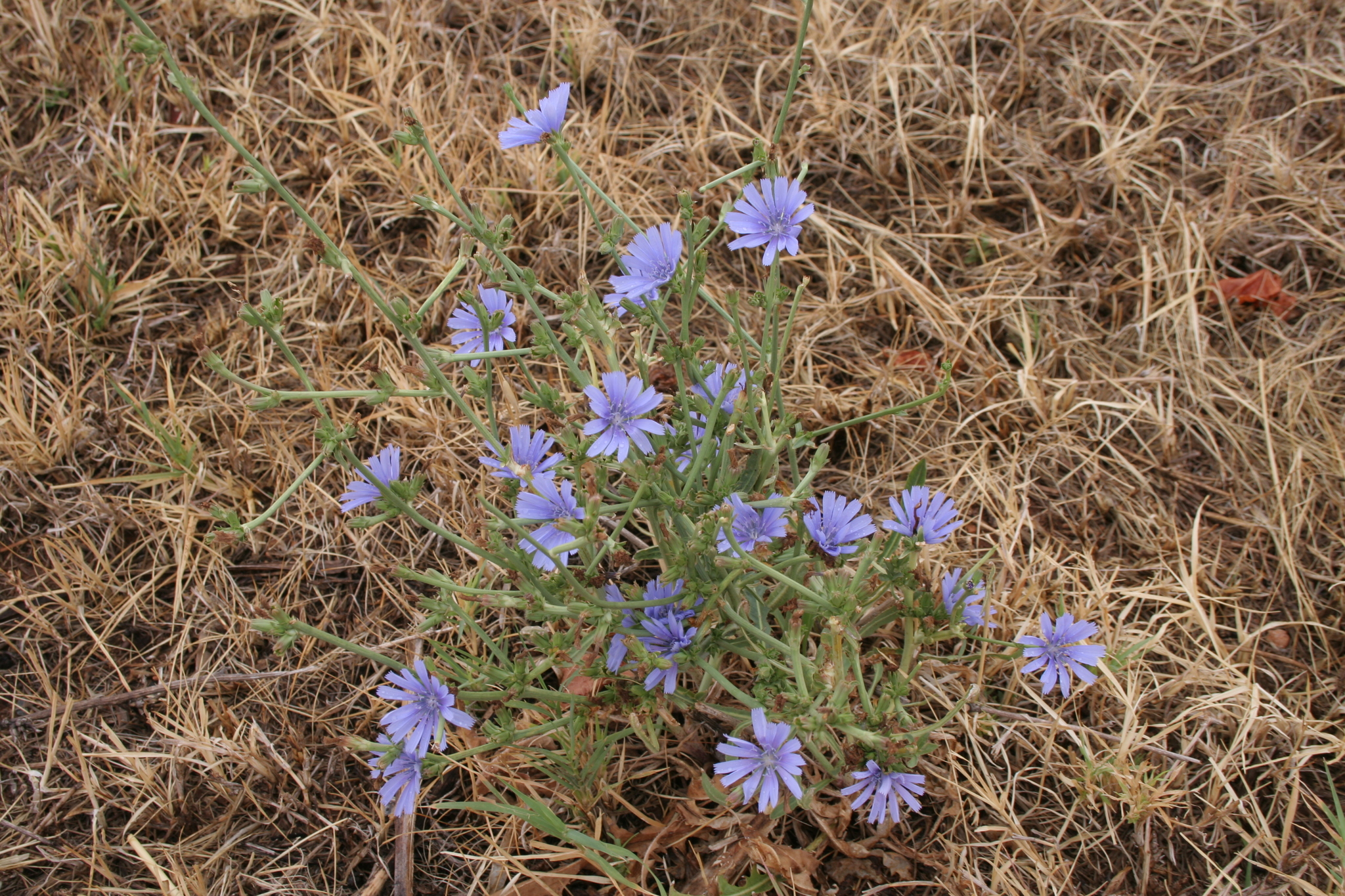
Perennial herb to 1.2 m tall, glabrous or hairy. Stems erect, much-branched. Basal leaves oblanceolate, to 30 cm long, to 12 cm wide, margins toothed to divided, petiolate. Stem leaves smaller, often stem-clasping, much reduced towards ends of branches, sessile. Capitula to 3 cm across, 1-3, mostly in axils of reduced leaves; spring and summer. Florets blue, rarely white or pink. Achenes 2-3 mm long. Pappus a ring of scales 0.2-0.4 mm long.
Europe
Cultivated for centuries as a salad vegetable or for fodder, with commercial production mainly in Belgium and Holland; the roots are often used as a coffee substitute. Listed cultivars include: 'Long Green Calalonga', 'Redheart', 'Rosso Supreme', 'Witloof de Brussels' and 'Zoom'.
C. endivia L., Endive, is similar but is an annual or biennial herb with purplish florets and achenes and with pappus, scales about 1 mm long. It is commonly grown as a salad vegetable, listed cultivars including 'Green Curled', 'Hilton', 'Summer Frisee' and 'Winter Frisee'.
Source: (2002). Asteraceae. In: . Horticultural Flora of South-eastern Australia. Volume 4. Flowering plants. Dicotyledons. Part 3. The identification of garden and cultivated plants. University of New South Wales Press.
